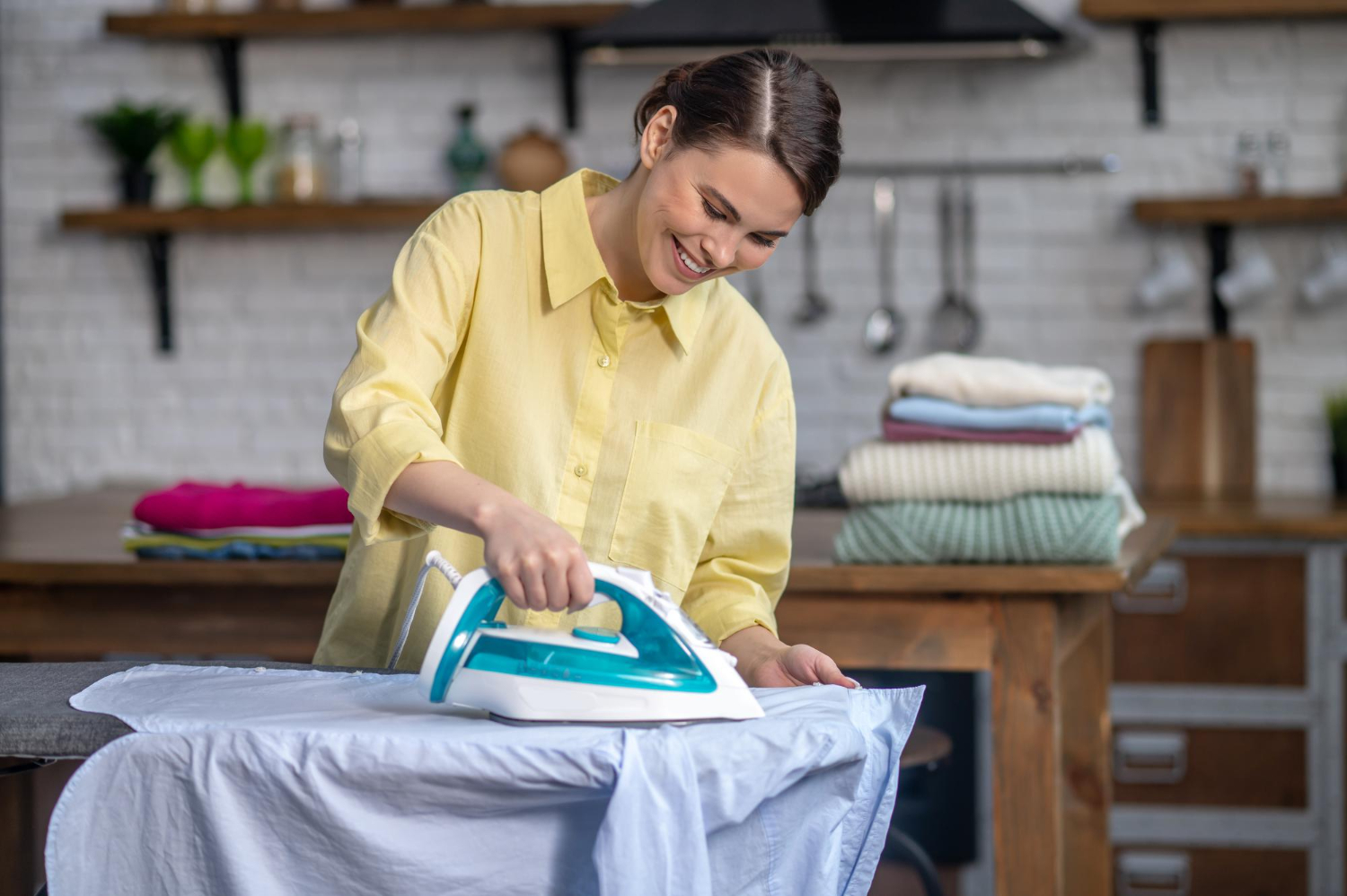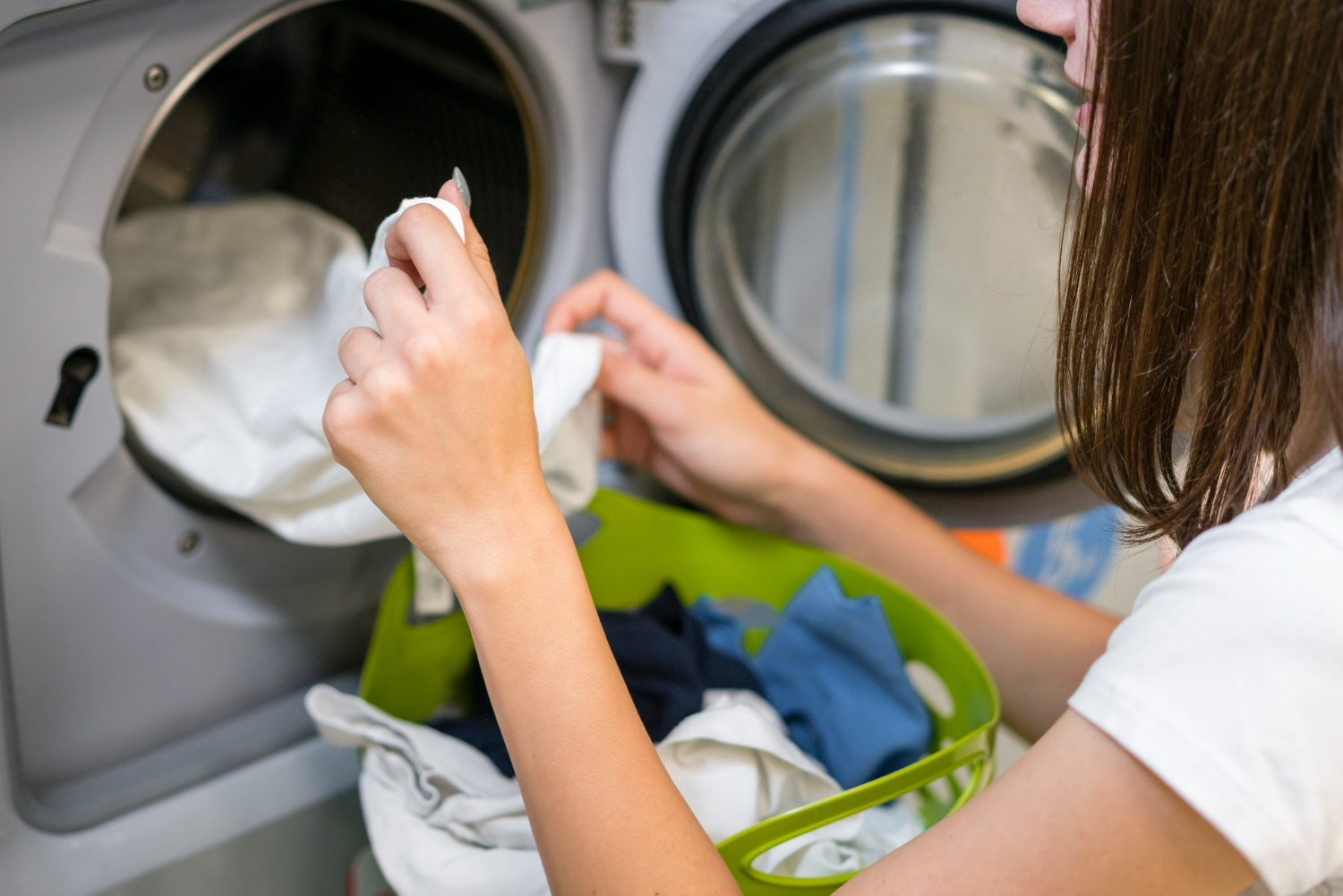How to iron clothes? Ironing clothes is an indispensable aspect of maintaining a polished appearance. Beyond just eliminating wrinkles, it’s about presenting oneself with confidence and care. Well-ironed clothes contribute significantly to a person’s style and overall impression. However, several misconceptions about ironing often discourage individuals from mastering this essential skill.
Introduction to Ironing Clothes
Ironing clothes is a practice embedded in personal grooming and attention to detail. It goes beyond mere wrinkle removal, reflecting an individual’s commitment to a polished appearance. Today’s ironing methods evolved from historical practices, and offer diverse tools and techniques for achieving impeccably smooth garments.
This task isn’t just about erasing wrinkles; it’s about exuding confidence. Despite common misconceptions tagging it as tedious, mastering proper ironing techniques can turn it into a satisfying, confidence-boosting routine that enhances the overall presentation.
Types of Irons and Ironing Tools
Different ironing preferences are accommodated by a variety of equipment and irons. By injecting clothing with steam, steam irons with steam vents effectively eliminate creases. Dry irons, which just use heat, provide a less complicated method of removing wrinkles.
A flawless ironing experience is enhanced by complementary equipment like pressing cloths and ironing boards. Modern advancements include cordless irons and sophisticated functions like digital temperature controls for accurate settings and auto-shutoff for safety.
Knowing these various equipment enables people to select the best one, expediting the ironing procedure and guaranteeing the best outcomes. Purchasing high-quality instruments makes this routine work easier, more productive, and satisfying.
Preparation Before Ironing
Effective ironing begins with thorough preparation. Sorting clothes by fabric type and color streamlines the process, preventing accidental damage and ensuring efficient ironing. Understanding garment labels for specific ironing instructions is crucial to avoid mishaps. Setting up the iron correctly, including selecting appropriate temperature settings, guarantees safe and effective ironing.
Moreover, preparing the ironing space by ensuring adequate ventilation and a stable, clutter-free surface optimizes the ironing experience. Having necessary accessories like a water spray bottle for steam irons or a pressing cloth for delicate fabrics enhances ironing efficiency.
Ironing Different Fabrics
Different fabrics demand tailored approaches to ironing. Understanding the unique needs of various fabrics ensures safe and effective wrinkle removal without damaging the material. Cotton and linen typically withstand higher heat, while delicate fabrics like silk require lower temperatures to prevent damage.
How to iron clothes: Moreover, synthetic blends and specialty fabrics have specific ironing requirements, necessitating attention to detail and adherence to garment labels. Employing proper techniques for each fabric type guarantees a professional finish without compromising fabric integrity.
Ironing Techniques
Developing a variety of ironing techniques is essential to getting a finished look. Effective wrinkle removal requires different strategies for different types of clothing. Ironing shirts and blouses inside out can help protect the buttons, but ironing pants and trousers means paying close attention to the seams and creases.
Using the right ironing procedures for each type of garment is essential to understanding the subtleties of ironing dresses, skirts, coats, suits, and specialized items like embroidered garments or fragile materials. Perfect outcomes are achieved by adopting tricks like applying steam to stubborn creases or using a pressing cloth on delicate materials.
In addition, using time-saving strategies like batch ironing and ironing similar kinds of cloth together maximizes productivity while guaranteeing a perfect finish. Gaining expertise in these methods ensures a well-groomed closet without sacrificing clothing quality.
Advanced Ironing Methods
Exploring advanced ironing methods elevates the ironing experience to achieve exceptional results. Vertical steaming for drapes and curtains allows efficient wrinkle removal without taking down the fabric. Perfecting pleats and creases involves meticulous attention to detail, ensuring crisp lines and professional finishes on garments.
Moreover, mastering ironing techniques for different collar styles and intricate designs like ruffles and frills requires precision and care. Employing these advanced methods guarantees a sophisticated and flawless presentation of various clothing items.
Troubleshooting Common Ironing Problems
How to iron clothes: Encountering wrinkles on delicate fabrics or dealing with stubborn creases often poses challenges during ironing. Troubleshooting these common problems involves employing effective solutions without damaging the garments.
Methods like using a pressing cloth or employing lower heat settings for delicate fabrics address issues without causing damage. Additionally, knowing how to handle accidental stains during ironing ensures clothes remain spotless and presentable.
Maintaining Your Iron and Ironing Area
Regular maintenance of ironing tools and the ironing area is essential for consistent and effective results. Deep cleaning of the iron prevents residue buildup that could transfer onto garments. Proper storage and safety measures for irons ensure their longevity and safe usage.
Additionally, caring for the ironing board by keeping it clean and in good condition contributes to an efficient ironing experience. Maintaining these tools and the ironing space guarantees optimal performance and prolongs the lifespan of ironing equipment.
Benefits of Proper Ironing – How to Iron Clothes
Proper ironing has advantages that go beyond appearance. Wrinkle-free clothes exude professionalism and confidence, making a good first impression. Additionally, extending the life of clothing using good ironing techniques lowers the need for frequent garment replacements, saving both time and money.
How to iron clothes: Additionally, making a good impression on others with well-pressed clothes enhances social interactions and builds self-assurance and confidence. Using appropriate ironing techniques improves one’s general well-being and confidence in a variety of spheres of life in addition to one’s outward appearance.
Tips and Tricks for Effective Ironing
- Time-saving techniques: Group similar fabrics for quicker ironing. This minimizes temperature adjustments, speeding up the process.
- Use of Fabric Sprays: Spritz water or fabric spray on tough wrinkles before ironing for smoother results with less effort.
- Batch Ironing: Iron similar fabrics in succession to maintain a consistent temperature, making the process more efficient.
- Utilize Ironing Aids: Invest in steam generators or garment steamers for delicate fabrics or tough-to-iron clothes.
- Ironing in Layers: Layer clothes while ironing; a damp cloth on top aids in removing stubborn wrinkles.
- Hang Clothes Properly: Hang ironed clothes immediately on supportive hangers to retain their fresh look.
- Temperature Adjustment: Adjust heat based on fabric; lower for delicate materials, higher for sturdier ones.
- Ironing Inside-Out: Protect sensitive fabrics or prints by ironing clothes inside-out.
- Use Ironing Board Padding: Add padding for smoother ironing; it supports fabrics better.
- Ironing Sleeves and Collars Last: Save detailed areas for final ironing to avoid accidental wrinkles.
Pros and Cons of Different Ironing Methods
- Steam Irons:
- Pros: Efficiently remove wrinkles with steam, suitable for various fabrics without exerting much pressure on the fabric.
- Cons: Require frequent water refills, potentially causing interruptions and water spots on clothes if not managed properly. Some models might be heavier due to the water tank.
- Dry Irons:
- Pros: Simplify ironing with consistent heat, especially effective for fabrics that don’t need steam.
- Cons: Lack a steam function, making them less effective on tough creases or specific fabrics that benefit from steam-assisted ironing. Dry irons may take longer to remove stubborn wrinkles.
- Cordless Irons:
- Advantages: Offer increased mobility and flexibility during ironing sessions.
- Disadvantages: Might have limited battery life, requiring frequent recharging or potentially impacting the iron’s performance during longer ironing sessions.
- Steam Generator Irons:
- Pros: Produce continuous steam for longer periods, making them efficient for larger loads of laundry.
- Cons: Bulkier compared to traditional irons and might be more expensive.
- Garment Steamers:
- Advantages: Gently remove wrinkles without direct contact, suitable for delicate fabrics and drapes.
- Disadvantages: Might not provide the crisp finish achieved by traditional irons. Some steamers require more space for operation and storage.
- Travel Irons:
- Pros: Compact and portable, convenient for travel or small spaces.
- Cons: Often have fewer features and smaller water tanks, making them less efficient for extensive ironing sessions.
- Heat Press Machines:
- Advantages: Offer uniform heat and pressure, ideal for professional or bulk ironing needs.
- Disadvantages: Require larger storage space, and some models might be more complex to operate.
- Hybrid Irons (Steam and Dry Functions):
- Pros: Combine the benefits of steam and dry irons, offering versatility in wrinkle removal.
- Cons: Might be heavier due to the inclusion of both steam and dry functionalities, impacting maneuverability.
Preventative Measures for Safe Ironing
- Testing Iron Settings: Always test iron settings on inconspicuous areas before ironing visible portions.
- Avoiding Excessive Heat: Be cautious with delicate fabrics; avoid using excessive heat to prevent damage.
- Handling Embellished Clothing: Use a pressing cloth or iron on the reverse side to protect embellishments.
Conclusion
Mastering the art of ironing isn’t merely about eliminating wrinkles; it’s a demonstration of attention to detail and personal care. Through this detailed guide exploring various ironing methods, techniques, and tips, you’ve embarked on a journey toward impeccable garment care. Understanding the diverse ironing tools available, from steam irons to garment steamers and heat press machines, equips you with the knowledge to choose the most suitable method based on your fabric preferences and specific needs.
Efficiency in ironing isn’t solely reliant on the tools at hand; it’s also about adopting time-saving techniques and understanding fabric requirements. By organizing clothes into batches based on fabric types and utilizing fabric sprays or steam aids, you’re poised to streamline the ironing process. Whether you opt for the convenience of cordless irons or the efficiency of steam generator irons, each method has its own set of advantages and considerations, providing a range of options to cater to individual preferences.
Frequently Asked Questions
Q: How often should I clean my iron?
A: Regular cleaning is recommended based on usage, ideally monthly.
Q: Can I iron all fabrics at the same temperature?
A: No, various textiles require different temperatures to be ironed safely.
Q: What should I do if I accidentally burn my clothes while ironing?
A: Stop ironing right away, let the clothing to cool, and evaluate the damage. Seek expert assistance as necessary.
Q: Is it necessary to use distilled water in a steam iron?
A: Distilled water helps prevent mineral buildup in the iron, ensuring longevity.
Q: Can I use an iron without an ironing board?
A: While an ironing board provides a flat, stable surface, you can use a clean, flat surface as an alternative.
Check Out Further Pieces: How to Dry Clothes Without Shrinking



